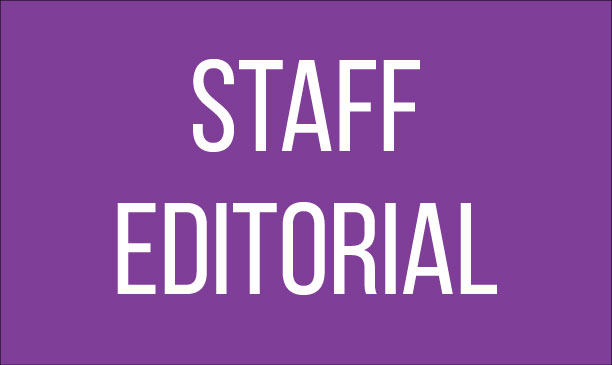During August and September in Indiana, temperatures often hit the 80s and 90s with humidity up to 90 percent. It is typically in this kind of weather when students often find themselves on the wrong end of the school dress code. Unfortunately, conflict emerges when the line of what is appropriate needs to be drawn. Because of the current vague dress code policy, the idea of what is suitable for school varies greatly from student to teacher, and administrators should address this issue to avoid future complications.
First, clothing choices vary greatly at this school. CHS has over 5,000 unique personalities in its halls this year. It is important to have a diverse student body, and one of the most evident signs of individuality is the way a student dresses. A dangerous part of dictating what students wear is the message it sends to them. If a student is disciplined for his or her clothing, it may tell of his or her worth if a student is determined by his or her looks. The point of the dress code is to keep students on task during school, not to rob them of their originality. While the dress code should be enforced to keep students focused, it should not detract from education or interfere with students’ decisions to wear comfortable clothes.
Second, faculty members’ ideas of what is and is not acceptable vary, and it is up to the individual teacher to enforce his or her interpretation of the policy or let it be. A teacher or administrator calling out a student can be embarrassing and upsetting for him or her, especially if the student is unaware that he or she is breaking the rules. If a student misses an entire class to sit in an office after a teacher or an administrator deems shorts to be too short, it tells the other students present that the violater’s education is less important than appearance. This may even occur after another teacher has either ignored the infraction or deemed the clothing to be appropriate. The official dress code listed in the Pathways bans certain items such as “short skirts and shorts … those which reveal bare midriffs or backs … tank tops, those which contain spaghetti straps … plunging or revealing necklines,” but the rest of the list is vague. It also states that clothes banned are not limited to the list, which means that, in theory, teachers and administrators have the power to deem anything a student wears as inappropriate. If administrators don’t want students wearing a certain type of clothing, it is important that they inform students specifically on what they can and cannot wear.
High school students are almost at the age to make their own decisions as adults. In a few years, we will all decide on which career we will pursue or which college we will attend. Therefore, it is important for students to have some say in a rule that directly impacts them. Adults cannot expect students to go from that treatment to making mature adult decisions automatically after graduation. This is the time for us to learn to make mature decisions in our best interest. These skills will influence our decision making when it comes to college and careers.
While it is certainly important for students to dress appropriately for a learning environment, the current rules for what is and is not allowed need to be clearly defined so students, teachers and administrators are all on the same page. If teachers and administrators expect students to follow the dress code, they need to agree on the rules and ensure students are well informed. Additionally, students should be allowed some input on the dress code requirements to both prepare for the adult world and provide a collaborative approach and some sense of ownership toward a common goal.

































![AI in films like "The Brutalist" is convenient, but shouldn’t take priority [opinion]](https://hilite.org/wp-content/uploads/2025/02/catherine-cover-1200x471.jpg)









































![Review: “The Immortal Soul Salvage Yard:” A criminally underrated poetry collection [MUSE]](https://hilite.org/wp-content/uploads/2025/03/71cju6TvqmL._AC_UF10001000_QL80_.jpg)
![Review: "Dog Man" is Unapologetically Chaotic [MUSE]](https://hilite.org/wp-content/uploads/2025/03/dogman-1200x700.jpg)
![Review: "Ne Zha 2": The WeChat family reunion I didn’t know I needed [MUSE]](https://hilite.org/wp-content/uploads/2025/03/unnamed-4.png)
![Review in Print: Maripaz Villar brings a delightfully unique style to the world of WEBTOON [MUSE]](https://hilite.org/wp-content/uploads/2023/12/maripazcover-1200x960.jpg)
![Review: “The Sword of Kaigen” is a masterpiece [MUSE]](https://hilite.org/wp-content/uploads/2023/11/Screenshot-2023-11-26-201051.png)
![Review: Gateron Oil Kings, great linear switches, okay price [MUSE]](https://hilite.org/wp-content/uploads/2023/11/Screenshot-2023-11-26-200553.png)
![Review: “A Haunting in Venice” is a significant improvement from other Agatha Christie adaptations [MUSE]](https://hilite.org/wp-content/uploads/2023/11/e7ee2938a6d422669771bce6d8088521.jpg)
![Review: A Thanksgiving story from elementary school, still just as interesting [MUSE]](https://hilite.org/wp-content/uploads/2023/11/Screenshot-2023-11-26-195514-987x1200.png)
![Review: "When I Fly Towards You", cute, uplifting youth drama [MUSE]](https://hilite.org/wp-content/uploads/2023/09/When-I-Fly-Towards-You-Chinese-drama.png)
![Postcards from Muse: Hawaii Travel Diary [MUSE]](https://hilite.org/wp-content/uploads/2023/09/My-project-1-1200x1200.jpg)
![Review: "Ladybug & Cat Noir: The Movie," departure from original show [MUSE]](https://hilite.org/wp-content/uploads/2023/09/Ladybug__Cat_Noir_-_The_Movie_poster.jpg)
![Review in Print: "Hidden Love" is the cute, uplifting drama everyone needs [MUSE]](https://hilite.org/wp-content/uploads/2023/09/hiddenlovecover-e1693597208225-1030x1200.png)
![Review in Print: "Heartstopper" is the heartwarming queer romance we all need [MUSE]](https://hilite.org/wp-content/uploads/2023/08/museheartstoppercover-1200x654.png)





